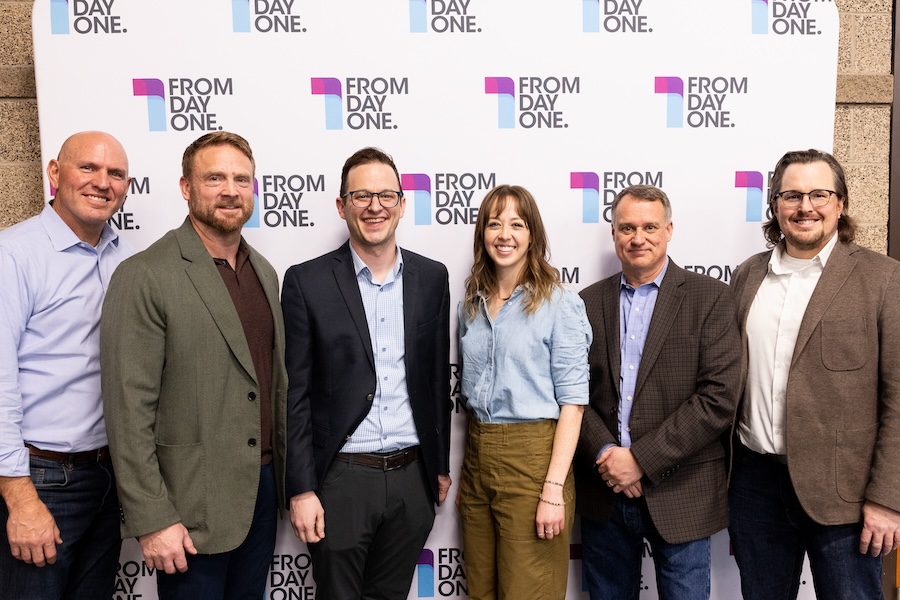How to Make Reskilling Part of a Corporate Culture of Learning


“You will never hire your way out of your skills deficit,” said Marcus Cazier, head of learning and development for the Americas at bioMérieux.
In the next two years, researchers posit that half of your skills will be irrelevant – a pattern that’s expected to continue. So how can employers get ahead of this skilling cycle? Offering insight and advice for other people leaders, Cazier spoke in a panel discussion titled, “How to Make Reskilling Part of a Corporate Culture of Learning” panel at From Day One’s conference in Salt Lake City.
The other panelists agreed with Cazier: some sort of training will always be required. “If you hire for specific [technical] skills, you ignore the connection points existing employees inside your organization have. Those skills you can’t hire for, they’ll have to be developed,” said panelist Trent Savage, chief human resources officer at Mountain America Credit Union. “The question is: which type of skill do you want to spend time developing?”
Additionally, establishing that your company values challenges and growth will make your best team members want to stick around, boosting your bottom line in the long run.
“Promoting a culture that looks internally to find people that want different opportunities, that will help with retention,” said Donald Erb, HR channel czar at CollegeNET.
How Do I Start Developing a Culture of Learning?
Once you’re firm on the 'why' of reskilling, the real work begins.
“At Campfire, the culture of learning really starts with our leaders,” said Steve Arntz, CEO of Campfire. But instead of letting inspiration spikes die off with executives, Arntz says they train down: each leader trains another, going into perpetuity.
“This starts with getting my leaders to instill their teams with the idea that we need to learn, develop, and grow together. We need to find solutions together. And guess what? As a leader, I'm here to connect you to the resources that you need.”
Leaning on those employees that are already seeking out those challenges is the first step, Erb says.
“You’ll draw more people in because [your] reputation is investing in growth,” he said. “People get frustrated when they’re not even asked if they’re interested in learning new skills – I think it diminishes motivation.”

Career ladders should look more like climbing walls, Cazier says.
“The agility and the willingness to be flexible to do what the business asks you to do, that goes a long way,” he said. “Going up might not always be the right move, you may need to go sideways first.”
What if My Employees Don’t Want to?
If you’re in the process of establishing a culture of learning, you may receive some pushback.
Nate Miller, VP of learning and organizational development at Vivint, had first-hand experience when, as part of Vivint’s acquisition, installation and service technicians were asked to begin participating in revenue generation.
“There was reluctance to add this selling skillset,” he said. “It drove attrition. These folks chose their paths because they didn’t want to sell.”
Miller followed Erb’s earlier advice and found leaders who are naturally high learners and helped them frame experiences as growth opportunities rather than job requirements. Then, those who took the growth opportunities were rewarded.
“We integrated selling and technical skills into our scheduling software, so when we assign jobs, the most lucrative installation opportunities align with the most skilled revenue generators,” Miller said.
Vivint also cut out their performance improvement plans. “They were working from a place of fear,” he said. “We had to shift it from a place of fear to a place of opportunity and growth by reducing the amount of threat in the environment.”
What Skills Do We Need?
It’s simple: ask your people.
“You’ve got a traditionally top-down focus when it comes to budgets and implementation,” Arntz said. “But the frontline workers and managers, they know which skills they’ll need to adapt. [It may be beneficial] to allow people to choose their opportunities, which [are then pushed through] programs and initiatives at the higher levels.”
“Years ago, to develop someone meant to send them to a training,” Savage said. “Now it needs to be on-the-job and it needs to be connected to the needs of the business.”
CollegeNET uses “Focus Ring,” a peer-assessment tool that asks employees to respond to prompts and then evaluate their peer’s responses. “These are folks playing the same role as you in the organization, and you see how they address particular product knowledge questions,” Erb said. “That’s learning an immediate skill.”
Focus Ring goes further by grouping answers by how highly they were rated. “If we have groups that have eights and nines, they’re good candidates to become mentors,” he said. “They’ve demonstrated they have that particular skill.”
The Future of Skill Development
If you’re interested in technology development, Savage says HR needs your help.
“We’re close, but we’re not there yet,” he said. “Skills-based platforms don’t necessarily connect to development or to performance, so you must use multiple mediums [to tie your data] together. My hope is one day we get a more holistic look, because today we’re using Frankenstein technology.”
In the meantime, Arntz predicts AI will be pivotal.
“Engineers are using Copilot to write better and faster code,” he said. “Someone will build a Copilot for conversations, an AI assistant next to them during performance, expectations, and hiring. [When this is developed] it will enable our leaders to be more effective than they’ve ever been.”
Jacqueline is a writer and Master of Accounting graduate from the University of Utah. When she’s not in Excel or writing an article, she loves to run, play Candy Crush, and read novels.
The From Day One Newsletter is a monthly roundup of articles, features, and editorials on innovative ways for companies to forge stronger relationships with their employees, customers, and communities.